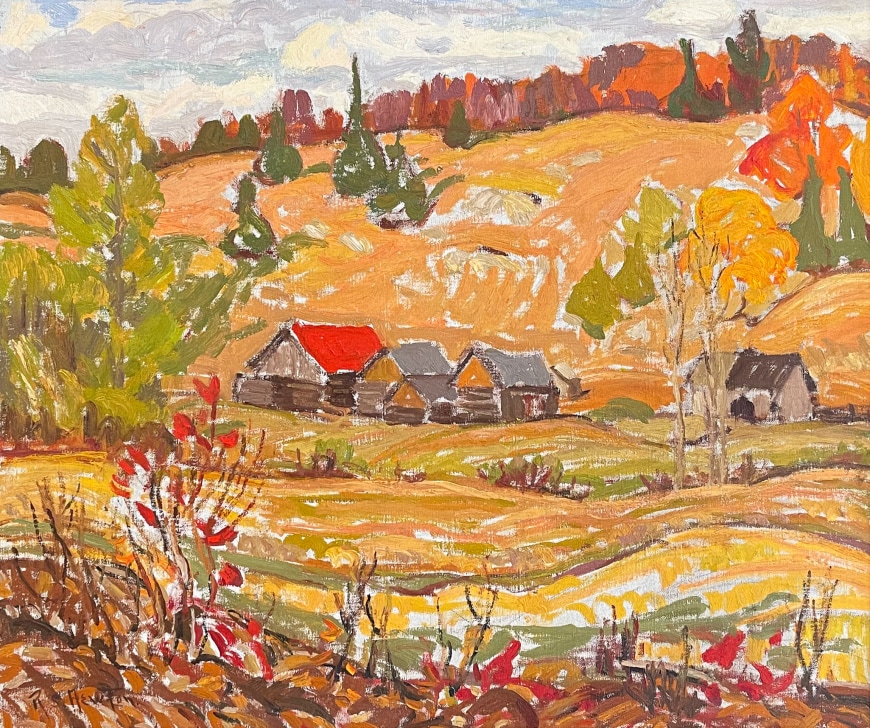-
Artworks
Randolph S. Hewton1888-1960Autumn Scene, 1925 (circa)signed with Hewton Estate signature stamp 'R.S. Hewton' (lower left); R.S. Hewton Studio Stamp (verso); inscribed inside Hewton Estate inventory stamp, ‘ HEWTON ESTATE No. 46A / AUTHENTICATED BY / Walter Klinkhoff (signature) / WALTER KLINKHOFF GALLERY’Oil on canvas20 1/8 x 24 1/8 in
51 x 61 cm





